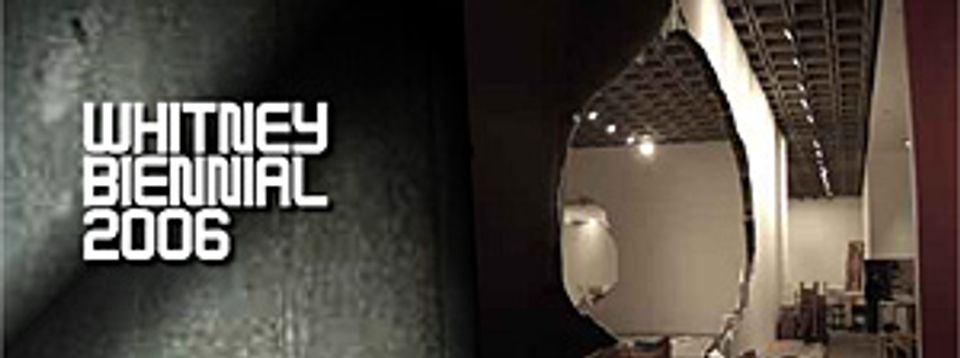
The 2006 Whitney Biennial opened yesterday.
These days biennials are met as often with fanfare as with handwringing about the state of the curated art survey. Mark Stevens discusses this year’s curator–critic matchup in his New York Magazine pregame analysis of the 2006 Whitney Biennial, “Day for Night,” which opens March 2. Calling the biennial predicament “serious but also funny,” he writes out a comic dialogue that actually drives home several meritable points. It should be said that he’s not speaking solely about the Whitney—these are complaints that have been continually levied at biennials for years.
Off-handedly, Stevens mentions a potential balm for critical chaffing: changing the format from biennial to quadrennial. Doubling the period doesn’t strike me as a half-bad idea. After all, the Whitney Biennial (nee the Annual) was initially conceived as a way to stoke interest in overlooked American artists. Given the seemingly inexhaustible interest in and market for contemporary art in America, that provision is a moot point (for now). The exhibition also serves as a proving ground for curators and big-picture ideas. In this capacity, two years has always struck me as an awfully short time to stage and execute a major exhibition and reflectively consider new trends in art.
On what this Biennial seems to be doing right, Stevens writes:
[W]hat’s heartening about this Biennial (whatever its success as an exhibit) is the sight of curators trying to clarify the moment rather than just passively presenting what’s happening. The challenge today is not, as it has been in the past, to get an audience for art. It is not to attack or not to attack. The challenge is to make distinctions of value and extract what matters from the rotten, and growing, clot of art-information—that is, to do exactly what sloppy surveys and art fairs do not.
The point about art fairs is well taken. But what is the difference between a bad biennial and a sloppy survey?
Curators should try to find the important shapes and essential lights in our evolving culture. They should even declare what’s good and bad. It doesn’t matter much, in the end, if they’re right. History comes to its own conclusions. But the effort to make judgments of value is bracing to the present.
An ambitious production like the Biennial can serve as a signpost for changing directions in art, even—maybe especially—when the curators call it wrong. Wrong is worth the risk; irrelevant isn’t worth the time.


















